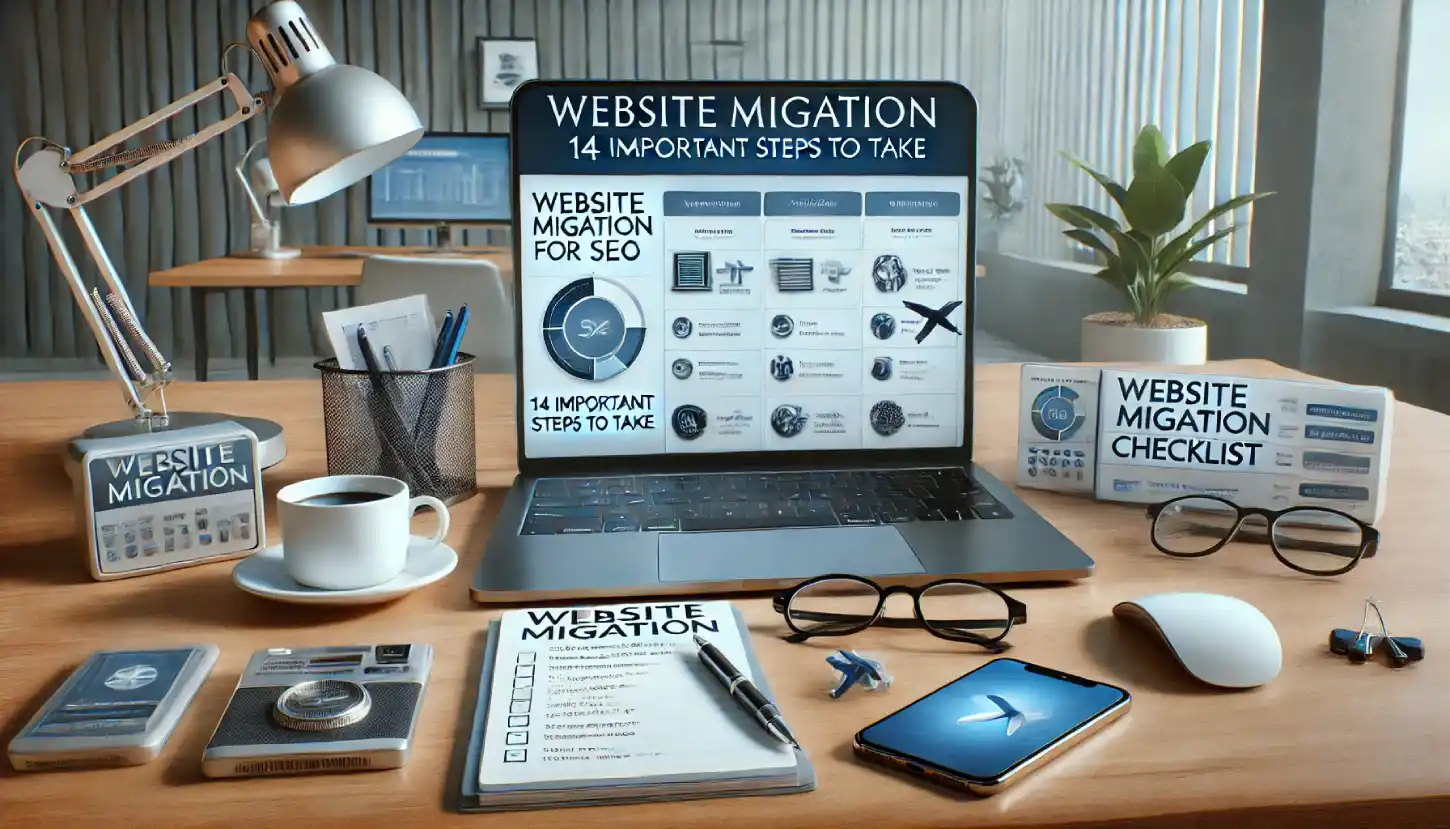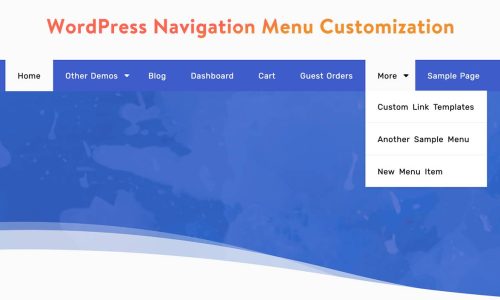
Website Migration Checklist for SEO: 14 Important Steps to Take
Website migration is a natural part of any enterprise’s growth and evolution. Whether you’re switching web hosts, changing domains, or moving to a new CMS, migrating your website might become necessary. Companies may migrate for various reasons, such as rebranding, transitioning to the cloud for better scalability, and more. Regardless of the reason, it is crucial to conduct website migrations with care. A poorly managed migration can lead to significant drops in search engine visibility, which may take months to recover. This is why following an SEO website migration checklist is important.
Website migration can be complicated due to the many factors involved. To streamline the process and help you avoid losses in search engine rankings, we’ve compiled a comprehensive website migration checklist. This checklist will guide you through the key steps to ensure a smooth and successful migration.
What is Website Migration?
Website migration refers to the process of making significant changes to a website that can affect its platform, structure, content, location, or design. These changes are typically undertaken to improve aspects such as search engine optimization (SEO), user experience, and site performance. Common types of website migrations include:
- Domain Migration: Moving the website to a new domain (e.g., from example.com to example.net).
- Platform Migration: Changing the content management system (CMS) or hosting provider (e.g., from WordPress to Shopify).
- Structural Migration: Altering the site’s architecture or URL structure.
- Content Migration: Updating, reorganizing, or changing the site’s content.
- Design Migration: Implementing a new website design or layout.
Website Migration Checklist:
Here’s a comprehensive website migration checklist to help ensure a smooth transition:
1. Plan Your Website Migration:
The first step in any website migration is thorough planning. This involves setting clear migration goals, assembling a project team, and creating a detailed project timeline. Your plan should outline every step of the migration process, from backing up your current site to monitoring performance post-migration. It is crucial to communicate your plan to all stakeholders, ensuring that all teams are in close communication and clearly understand their roles. This coordination is particularly important among your SEO teams, web developers, project managers, and content teams.
2. Inform Your Customers about Your Website Migration:
When planning a website migration, it’s essential to choose the timing carefully to minimize its impact on your visitors. During the migration, your content will be temporarily unavailable, which may lead to a slight drop in traffic. However, you can reduce this effect by avoiding peak times for your audience.
Opt for quieter periods, such as very early in the morning or late at night, taking into account the location of your servers and the majority of your traffic. For a global audience, finding a time when all visitors are inactive can be challenging. However, for small businesses with a more local audience, it is easier to schedule the migration at a time that causes minimal disruption.
3. Put Your Website in Maintenance Mode:
Putting your site in maintenance mode during a website migration is crucial as it ensures a seamless user experience by clearly communicating to visitors that the site is temporarily unavailable. It also safeguards data integrity by halting new data additions or modifications, which is essential for maintaining consistency, particularly for sites with user-generated content. Additionally, maintenance mode reduces server load, ensuring the migration proceeds smoothly without affecting live user interactions, and enhances security by limiting access during this sensitive period.
4. Create a Backup of Your Website:
Create a backup of your website so that you can revert to your old site if the launch goes sideways or not as planned. Sit down with your marketing and web development teams to develop a comprehensive rollback plan if you need to return to the old website to work out kinks for a successful website migration. You can also create backups manually by using the cPanel in your WordPress hosting, backup databases, or using an FTP client to access site files.
5. Disable Caching, Firewalls, or Redirect Plugins:
Before starting the migration process, it’s crucial to disable any caching plugins, firewalls, or redirect plugins that are active on your site. These tools can cause several issues during migration.
For example, a firewall can restrict the number of requests your website can receive. Since the migration process often generates a high volume of requests to transfer site files, the firewall might block these requests, leading to timeout errors.
Additionally, without deactivating these tools, you may encounter 403 Forbidden errors and 500 Internal Server errors. Remember to reactivate these plugins once your website is successfully running on the new host.
6. Migrate Your Site Files and Database:
Migrating your files and database before migrating your WordPress site is crucial to ensure data integrity and maintain site functionality. The files include essential elements like themes, plugins, and media, while the database holds critical information such as posts, pages, user data, and site settings. By transferring these components first, you minimize the risk of data loss and ensure that all aspects of your site are preserved, resulting in a fully operational site on the new host. This step-by-step approach also simplifies troubleshooting, as any issues can be addressed early in the process, leading to a smoother transition with less downtime.
7. Point Your Domain Name to New Host:
Next on the website migration checklist is domain management. Before you can confirm the success of your website migration, you need to point your domain name to your new host. You’ve likely heard of Domain Name System (DNS) records, but you might not be entirely sure what they are. Essentially, DNS records connect your domain name to the servers that host your site, including your host’s nameservers. If your new web host offers free migrations, they will probably update the nameservers automatically for you. In this case, you won’t need to take any action at this point. However, if you are migrating your site manually and using a domain registrar for your domain name, you will need to log into your registrar account to update your DNS settings.
8. Test Your SSL certificate:
Testing your SSL certificate after migrating your website is crucial to ensure security, trust, and functionality. The SSL certificate encrypts data between your site and its visitors, safeguarding sensitive information. Post-migration testing verifies that this encryption works correctly, maintaining the secure connection essential for protecting user data. It also ensures that the certificate is properly installed and recognized by browsers, which helps preserve your site’s credibility and prevents browser warnings that could deter visitors. Additionally, testing the SSL certificate supports SEO efforts and compliance with regulatory standards.
9. Update Your robots.txt File:
Updating your robots.txt file after migrating your website is essential to ensure proper search engine indexing and crawling. The robots.txt file instructs search engine bots on which pages to crawl and index, and which to avoid. After migration, the structure of your website or the location of specific directories might change, necessitating updates to these instructions. By revising the robots.txt file, you can prevent search engines from indexing duplicate or irrelevant content and ensure that your site’s most important pages are prioritized. This helps maintain or improve your search engine rankings, ensuring that users can find the right content and that your website’s SEO efforts remain effective.
10. Update Your Backlinks:
Your old website likely has valuable backlinks, especially if it includes location pages or important documents. To manage these, use tools like Search Console, Moz Link Explorer, or Majestic to identify which pages are attracting backlinks. Reach out to the websites linking to your old site and request updates to the backlinks, ensuring you retain all that valuable backlink equity. This process can be time-consuming, so assign someone to track these backlinks, handle outreach, and note in Analytics when a backlink is updated.
11. Crawl Your Website to Identify Errors:
As the migration process nears an end, it’s time to perform a full site crawl to identify any issues that the migration may have caused. Remove any blockades that could prevent users and search engine crawlers from accessing your new website. This crawl will help you identify new pages with missing meta tags, duplicate URLs, broken links, redirect chains, and pages that have become orphaned or inaccessible, along with other SEO errors. By the end of the crawl, you’ll have a clear understanding of the issues that need to be resolved to maintain your SEO standing.
12. Test and Submit Your XML Sitemap:
Submitting your XML sitemap after migrating your website is crucial for ensuring that search engines can efficiently discover and index your new site structure. An XML sitemap provides a roadmap of your website, highlighting the most important pages and their relationships. By submitting this updated sitemap to search engines, you help them understand the new organization of your site, ensuring that all pages, especially new or relocated ones, are indexed correctly. This improves the visibility of your content in search results, maintains your SEO efforts, and helps prevent any negative impact on your site’s search engine ranking due to migration.
13. Perform a Speed Test:
Performing a speed test after migrating your website is important to ensure optimal performance and user experience. Website speed significantly impacts user satisfaction, engagement, and conversion rates. After a migration, various factors such as server configurations, file paths, and database connections might affect loading times. A speed test helps identify any issues or bottlenecks introduced during the migration, allowing you to address them promptly. Additionally, website speed is a crucial factor for search engine ranking; ensuring your site loads quickly helps maintain or improve your SEO standing.
14. Ensure Your Old Hosting is Closed:
Now that the migration is complete, one final checklist item is to close your old domain hosting account. If you’re satisfied with the state of your new site, you can proceed with closing the old hosting account.
Before doing so, ensure that all your 301 redirects are set up properly, directing users away from the discontinued server. This guarantees a smooth transition for visitors and maintains your SEO efforts.
Conclusion:
Executing a website migration is a complex process that requires careful planning and attention to detail to preserve your site’s SEO performance and user experience. By following this comprehensive 14-step website migration checklist, you can navigate the migration smoothly and mitigate potential risks. By taking these important steps, you can maintain your search engine rankings, safeguard your content, and provide a seamless experience for your users, ensuring that your website continues to thrive in its new environment.









